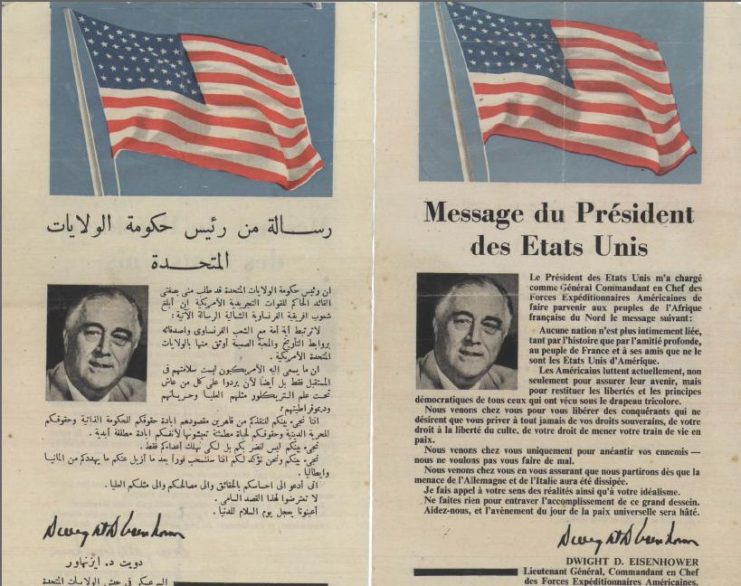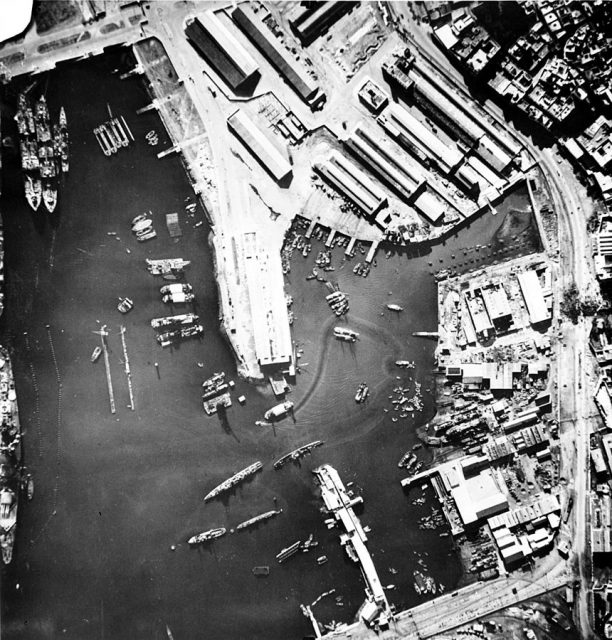On November 8, 1942, American ground forces entered the western theater of WWII. During Operation Torch they invaded three areas of Axis-occupied North Africa.
One of those was on the Atlantic coast, in French Morocco.
Day One: Central Force
The troops invading French Morocco were divided into three forces. The largest group landed around the towns of Fédala and Casablanca.
None of the forces involved had experience of such an operation. Few had knowledge of the area. It made for a messy start. Soldiers fell while climbing into landing craft and drowned while others got lost on their way to the beaches.
The Vichy French forces facing them were in the mood for a fight. They did not know whether they were being attacked by the British, who had sunk their fleet; the Germans, who had invaded their homeland and forced on them an ignominious truce; or the Americans. Whoever it was, they were not going to let them just walk in.
Shore batteries opened fire on the approaching boats. Planes took to the air and strafed soldiers on the landing beaches.
The Americans rapidly gained air superiority. They destroyed eight French fighters in a dogfight near Casablanca, losing only four in return. They also shot up dozens of French planes on the ground.
Despite their difficulties, the Americans got thousands of troops ashore and succeeded in all their objectives. They took Fédala and its harbor, allowing more men, equipment, and supplies to be unloaded.
Some of the French soldiers were glad when the fighting ended. They were keen to fight with the Allies against the Germans. However, those in command of Casablanca, the next target, could not be convinced to surrender.

Day One: Northern Force
Further north, a smaller force landed at Media. Their goal was to take the airport at Port Lyautey, to give American planes a land base.
It was the most difficult terrain of all the landings. Swampy ground and a river created obstacles to troops advancing off the beach. They also provided the French with good defensive positions.
As a result, the American troops became trapped on the coast. They could not take out the shore batteries, and so the ships had to move back out to sea, leaving the troops isolated. Getting reinforcements to land was slower than planned. Communications began to break down.
By nightfall, French reinforcements were on their way. The Americans were trapped between a tough enemy and a rising tide.
Southern Force
The third force landed at the village of Safi, 140 miles south of Casablanca. It was the only place apart from Casablanca with a harbor suitable for landing tanks.
The plan to take Safi was a bold one. Two destroyers had been stripped down and loaded with 147 soldiers in each. They steamed straight at the harbor while a red, white, and blue firework display attempted to put the defenders off firing at them.
The fireworks did not help, illuminating the Americans as targets but the soldiers still seized the port.
Their air cover had a tougher time. Several planes were lost because they could not find their way back to their aircraft carrier to land.
Despite a friendly fire incident on the first day and a French air attack on the second, it was the least eventful landing zone. On the second day, tanks drove out north toward Casablanca.
Day Two: Central Force
In the center, the second day was dominated by naval action. A French fleet sailed out of Casablanca to engage the approaching Americans. Shore batteries supported it.
Twice, the French tried to break through the American fighting ships to attack their troop and cargo vessels. They did not get through, but they hit two cruisers, two destroyers, and a battleship.
The Americans inflicted much heavier casualties. Four French destroyers and eight of their submarines were sunk, while four other ships were disabled. The American fleet gained control.

Days Two and Three: Northern Force
In the north, the French launched a counter-attack against the American forces on the beach at Media. The French had more tanks, but they were WWI machines, inferior to the American vehicles.
Twice the French attacked the American bridgehead and twice they were repulsed. The fighting went on for most of the day.
That night, under cover of darkness, a boatful of sailors planted explosives on the cable blocking the river mouth, severing it.
The Dallas, an old destroyer, had been stripped of much of her superstructure to make her lighter and give her a shallower draft. Carrying 75 soldiers, she sailed up the river. On the morning of the third day, she reached the airfield at Port Lyautey. The troops went ashore in rubber boats and seized the airfield.
American planes began flying into the new base.
A Sort of Peace
By the time the planes were landing at Port Lyautey, a cease-fire had been agreed along the coast.
The French did not surrender. They kept their guns. They flew their flags. They still controlled the native population. They no longer resisted the Americans, and many prepared to join the Allies.
As the same time, the Germans arrived. U-boats started attacking the American fleet, causing further losses.
It was too late to stop the landings. The Americans had lost 337 dead, 37 wounded, 122 missing, and 71 captured. In return, they had taken the Atlantic coast of North Africa. Supply lines were opened up, and French forces joined the Allies.
In French Morocco, the American part of the war in Africa was off to a good start.
Source:
Orr Kelly (2002), Meeting the Fox: The Allied Invasion of Africa, from Operation Torch to Kasserine Pass to Victory in Tunisia
